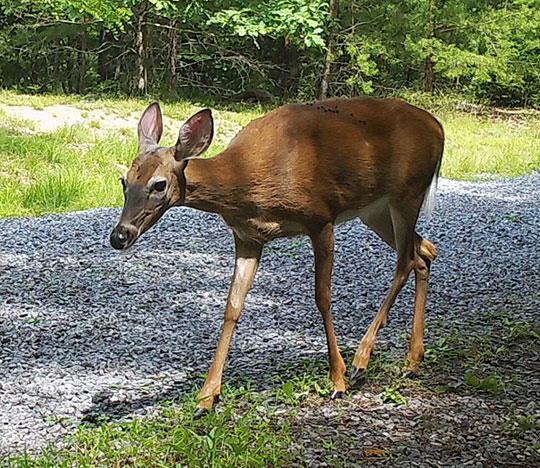Our wildlife cameras have been busy in the last month or so. Where there is plentiful prey, there are predators as well.
 |
| Turkey hens have been showing up pretty regularly. We haven't seen any poults (chicks) yet, but they're probably out there in the woods. |
 |
| This handsome buck emerged from the woods about an hour after sunrise. |
 |
| Within 10 minutes there were at least five deer grazing. |
 |
| Different day - something spooked these "whitetails". |
 |
| This rather haggard-looking doe was walking down the road. I can't tell what the line of dark spots along her back are - they continue down her right shoulder. |
 |
| But maybe she was exhausted from recently giving birth to this fawn, who doesn't look very steady on its feet and was only 10 seconds behind mom. |
 |
| Same location two days earlier. I hope the little fawn can be protected from the coyotes. |
 |
| I think bobcats are beautiful. They probably can't take down a fawn, but turkey poults are easy pickings. |










































